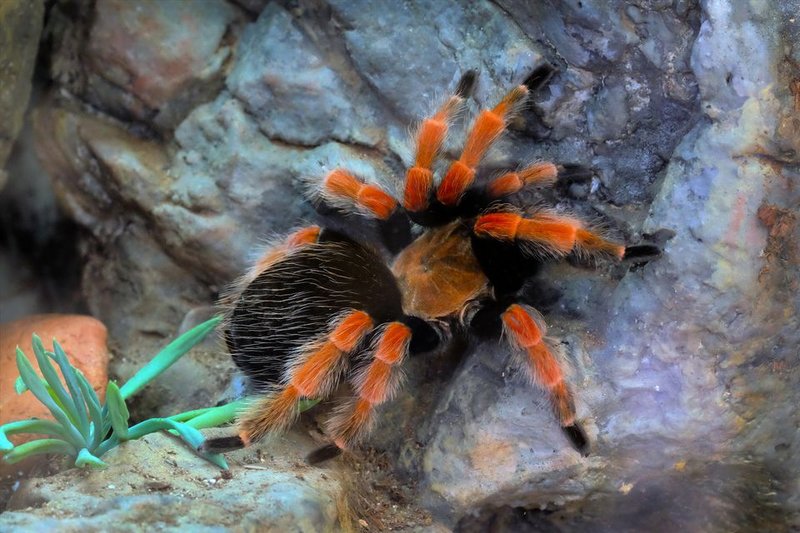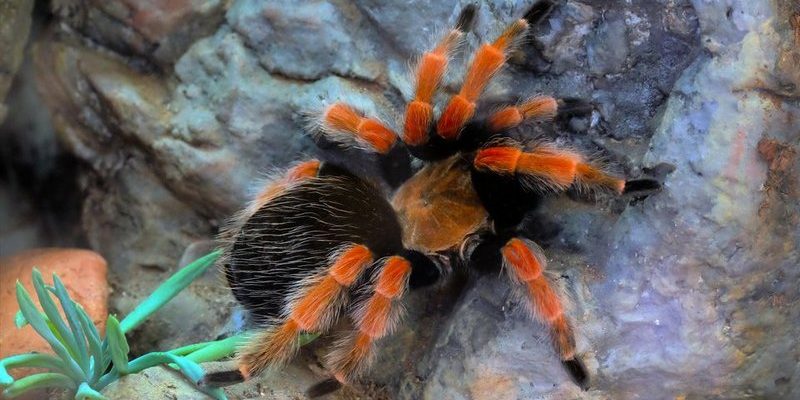
So, how long does a Mexican Redknee tarantula really live? Well, strap in, because we’re going to explore their lifespan, growth stages, and what you need to know if you’re considering adding one of these eight-legged wonders to your life. It’s a journey through the intriguing world of tarantulas, and I promise it’ll be worth your time.
Lifespan of Mexican Redknee Tarantulas
The lifespan of a Mexican Redknee Tarantula is one of the most captivating aspects of owning one. Generally speaking, these spiders can live anywhere from 10 to 30 years—yes, you read that right! In the world of tarantulas, that’s impressive. Most male tarantulas tend to have shorter lives, usually around 7 to 10 years, while females can thrive much longer.
Why such a difference? Here’s the thing: males often die after mating. It’s a bit rough, to be honest. Females, on the other hand, can focus on living and growing, especially since they may go through less stress compared to their male counterparts. This long lifespan makes them a fascinating choice for a pet, allowing for years of companionship.
Factors Influencing Their Lifespan
The lifespan of a Mexican Redknee Tarantula can be influenced by several factors, and understanding these can help you provide the best care. Here are some key points to consider:
- Environment: A stable habitat is crucial. These tarantulas thrive in warm, humid conditions. Improper temperature or humidity levels can significantly shorten their lifespan.
- Diet: Providing a diet rich in nutrients is essential. These spiders are carnivorous and primarily eat insects like crickets and mealworms. A well-fed tarantula is a happy tarantula.
- Stress Levels: Just like us, tarantulas can be affected by stress. Handling them too often or placing them in a noisy environment can lead to anxiety, affecting their health.
By keeping these factors in check, you can help ensure that your Mexican Redknee lives a long, fulfilling life.
Growth Stages of Mexican Redknee Tarantulas
Understanding the growth stages of a Mexican Redknee Tarantula is crucial if you’re planning on bringing one home. These spiders go through several life phases, each with its unique characteristics.
1. Spiderling: When they first hatch, they’re only about the size of a pea. During this stage, they’re very vulnerable, often spending their time hiding. As a pet owner, it’s important to provide a safe enclosure since they can be skittish.
2. Juvenile: After a few molts, they’ll grow into juveniles. This stage can last several years, during which they become more robust and confident. You’ll notice faster movement at this stage, so it’s essential to avoid startling them!
3. Adult: Eventually, they reach adulthood, and this is where the longevity aspect comes into play. Females will start to show their beautiful colors and size. Adult females can reach about 5 to 6 inches in leg span, while males stay a bit smaller.
These growth stages showcase the transition from an innocent little spiderling to a majestic adult, and each phase is a learning experience for pet owners.
How to Care for Your Mexican Redknee Tarantula
Caring for a Mexican Redknee Tarantula may seem daunting, but it’s pretty straightforward once you know what to do. Here’s a simple breakdown of how to give your spider the best life possible.
– Enclosure: Choose a terrarium that’s spacious but secure. You want to ensure they have room to move while keeping them safe from escape. A 10 to 20-gallon tank is ideal for adults.
– Substrate: Use a mix of potting soil and coconut fiber to mimic their natural habitat. This also helps with humidity, which is crucial for their well-being.
– Temperature and Humidity: Aim for a comfortable temperature between 75°F and 85°F. The humidity should remain around 60% to 70%. A hygrometer can help you keep track of these levels.
– Feeding: Feed them a diet of crickets, roaches, or mealworms, and remember to dust their food with a calcium supplement occasionally. Watch your tarantula’s appetite; it can be a good indicator of health.
Taking good care of your tarantula can help it live a long and healthy life, which is part of the joy of having one.
Common Misconceptions About Mexican Redknee Tarantulas
There are plenty of myths surrounding the Mexican Redknee Tarantula, and I think it’s essential to clear the air. Here are some misconceptions that often pop up:
– Aggressiveness: Many people believe that tarantulas are aggressive, but that’s not entirely true. Mexican Redknees are known for being relatively docile, making them suitable for beginners. Of course, it’s best to handle them with care.
– Poisonous Bites: While they can bite, their venom is not lethal to humans. It’s more like a bee sting, which can cause pain and swelling, but you’ll live to tell the tale.
– Lifespan is Fixed: Some folks think all tarantulas have a set lifespan, but as we discussed, environmental factors and care play a significant role here.
By debunking these myths, you can approach owning a Mexican Redknee with a clearer understanding and less hesitation.
The Joy of Owning a Mexican Redknee Tarantula
Owning a Mexican Redknee Tarantula can be a unique experience. They’re not just pets; they’re fascinating creatures that add an exotic touch to your home. Watching them grow and change over the years can give you a sense of connection—almost like being a proud parent!
Their long lifespan means you won’t just have a pet for a few years. Instead, you will have a companion, an eight-legged friend that teaches you patience and respect for nature. Plus, they require less attention than many traditional pets, like dogs or cats, making them a great option for busy lifestyles.
In conclusion, if you’re willing to put in the effort to create a comfortable environment, your Mexican Redknee Tarantula can thrive for years. By understanding their lifespan, growth stages, and care requirements, you’ll be well on your way to enjoying a long-lasting relationship with your new fuzzy friend. So, if you’ve been contemplating adding one to your life, go for it—who knows what fascinating moments await you!

